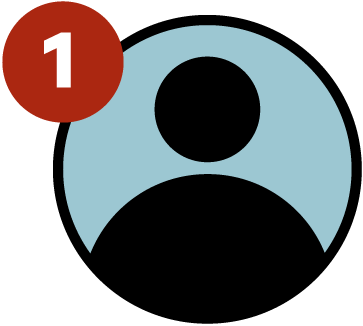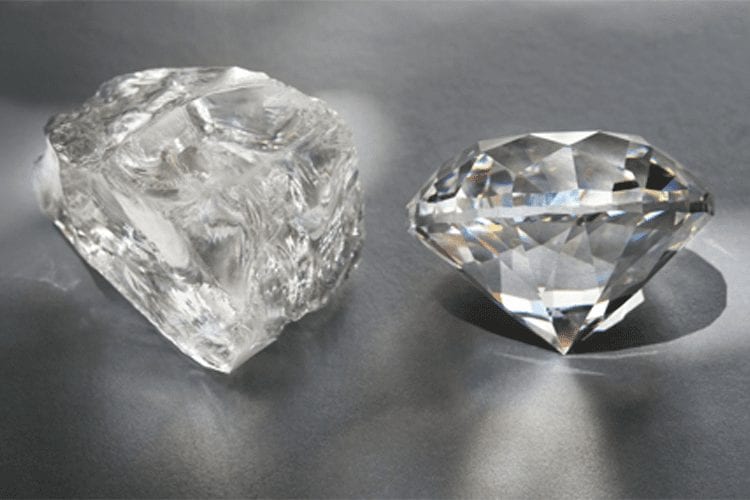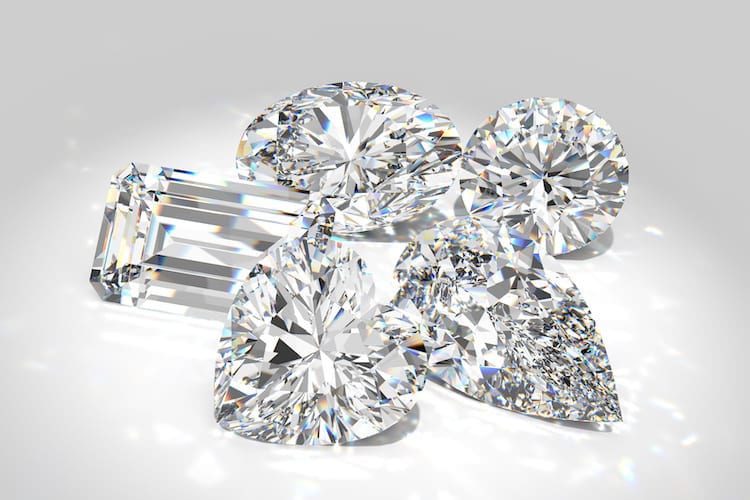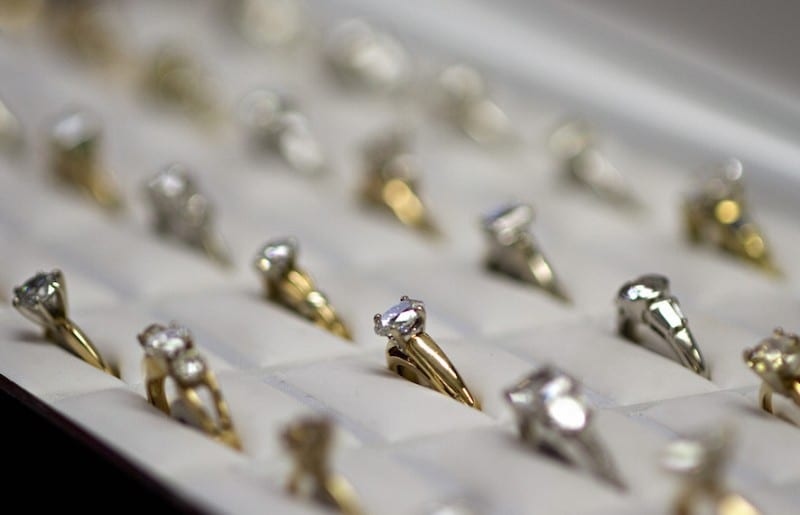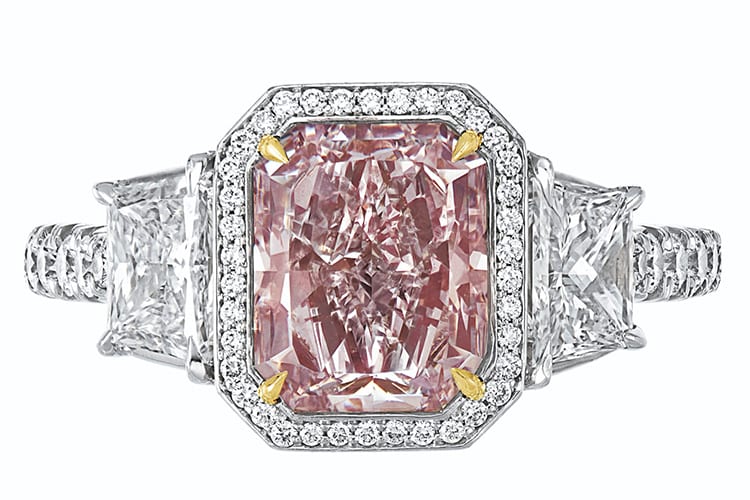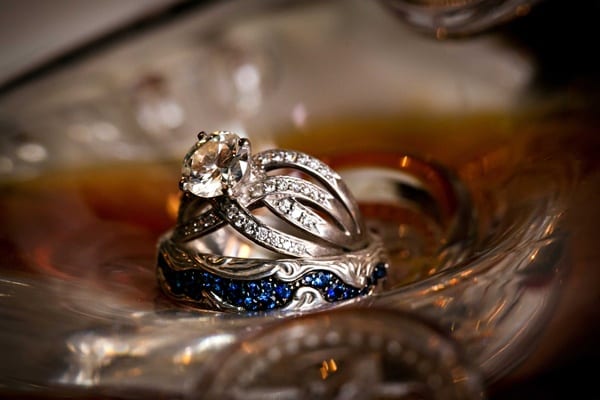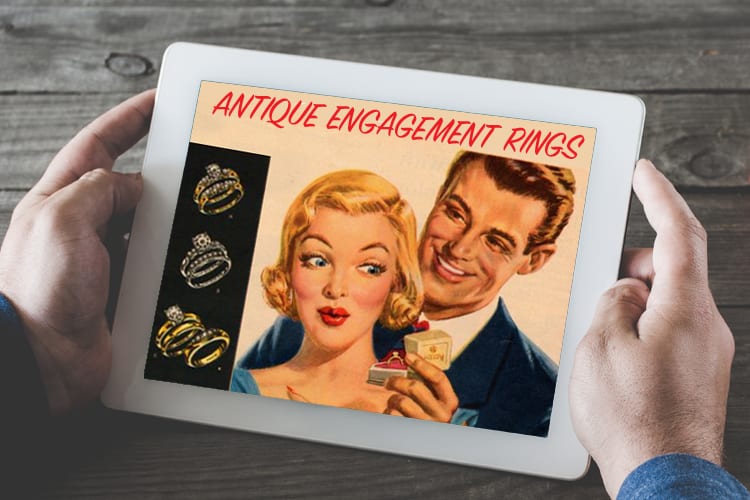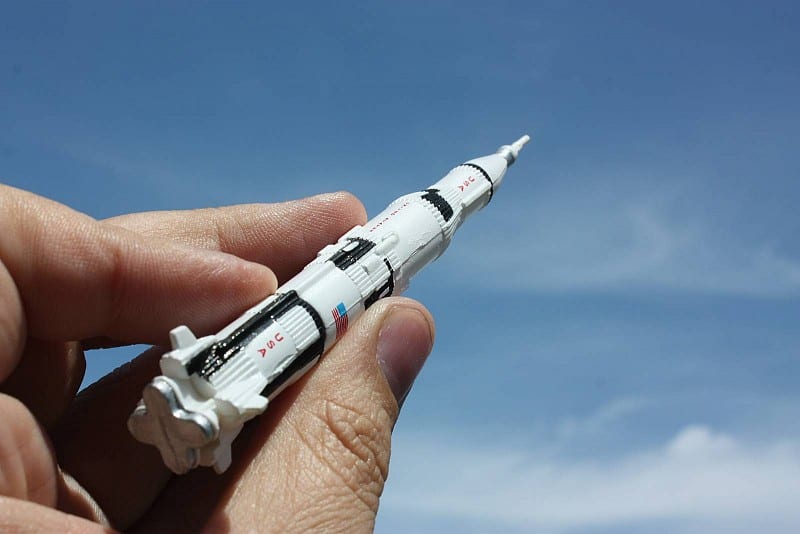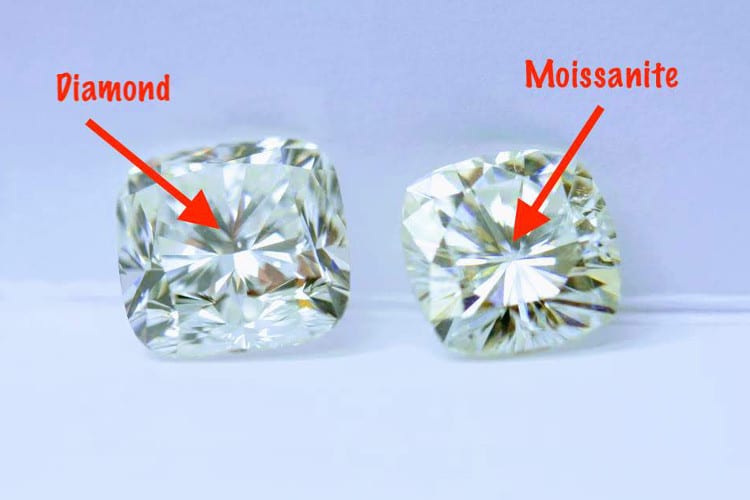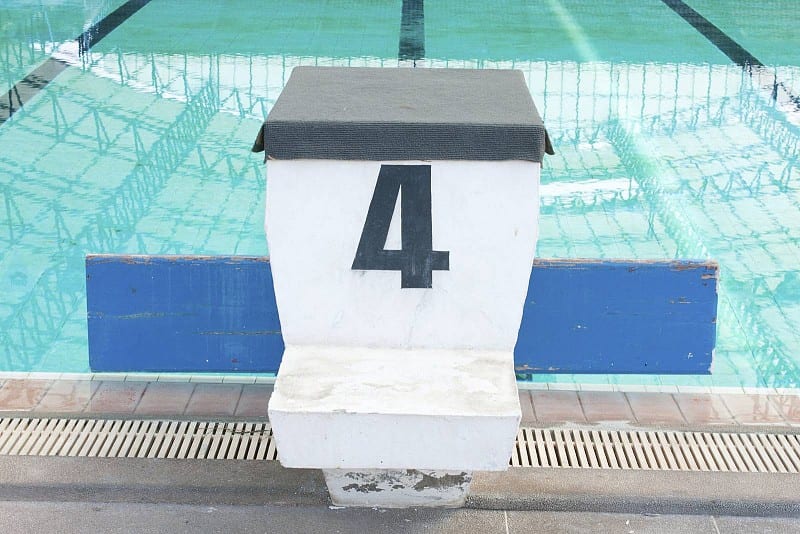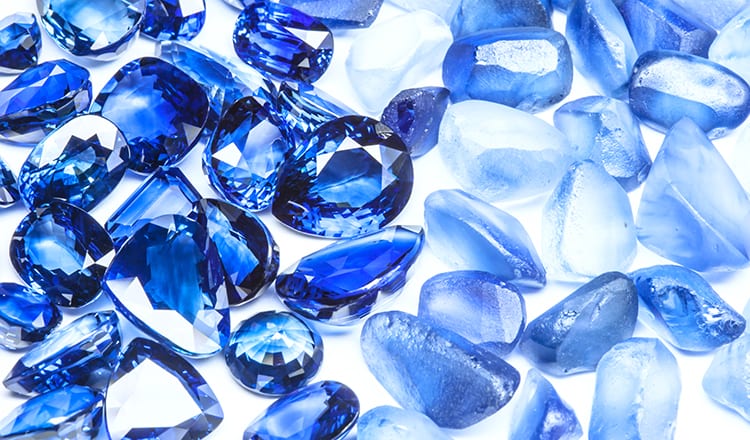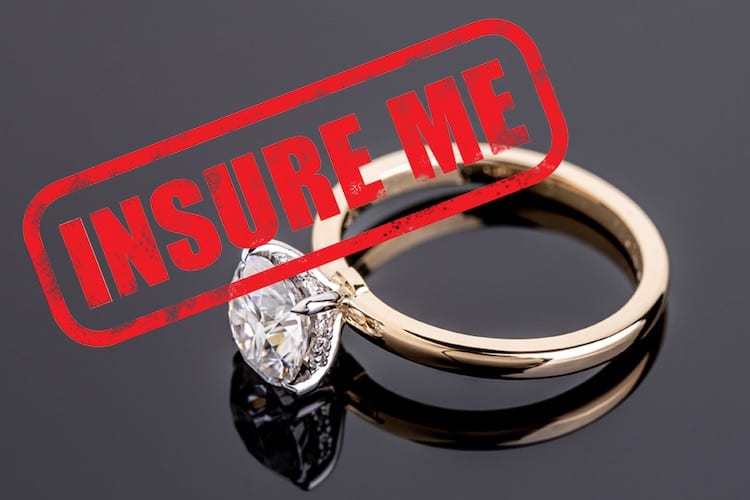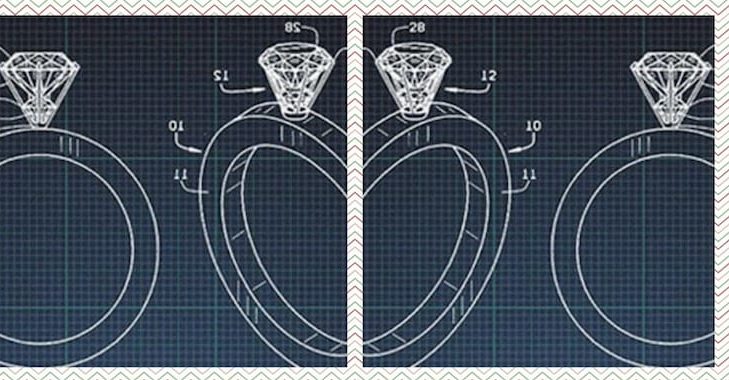
“Do I really need to learn more ring terminology?” you wonder as you frantically Google “engagement ring styles” and “diamond ring settings.” You already learned about the 4Cs and studied up on the different shapes of diamonds. And now you’re sifting through 500 different rings. Your eyes begin to cross, your head throbs, and you wonder if you’ll ever really know the difference between channel and pavé. Relax. We’re taking it step by step.
First, the style of a ring includes the entire frame that will show off or complement the diamond. The setting or mounting includes how the diamond is held in place, as well as any details on the head (front of the ring) underside (underneath the diamond) and shank (the band from the shoulder to the back of the ring). Here’s how Blue Nile‘s site illustrates some of the offerings:
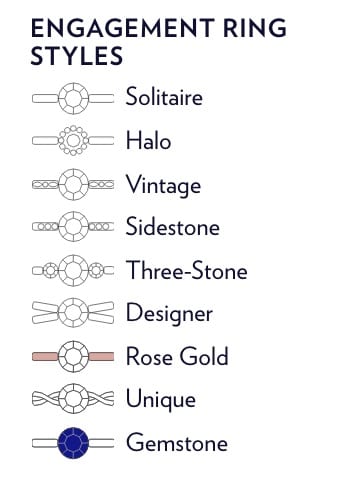
Now that we have that out of the way, let’s look at the main settings to help you find the perfect ring.
Solitaire/Prong Setting
Although the term solitaire is used for describing a setting, it actually means that it is a single stone engagement ring. It can be any shape (round, princess or pear, etc.) of one center diamond and can be set in many different types of settings. However, the most classic setting for a solitaire is a prong setting. Additionally, when you hear the words solitaire and prongs mentioned together, it will traditionally mean a round cut diamond.
Prong settings usually involve four or six small claw-like metal structures which hold the diamond. Prongs use less metal than any other setting, thus allowing more of the diamond to show and letting more light pass through to display its brilliance.
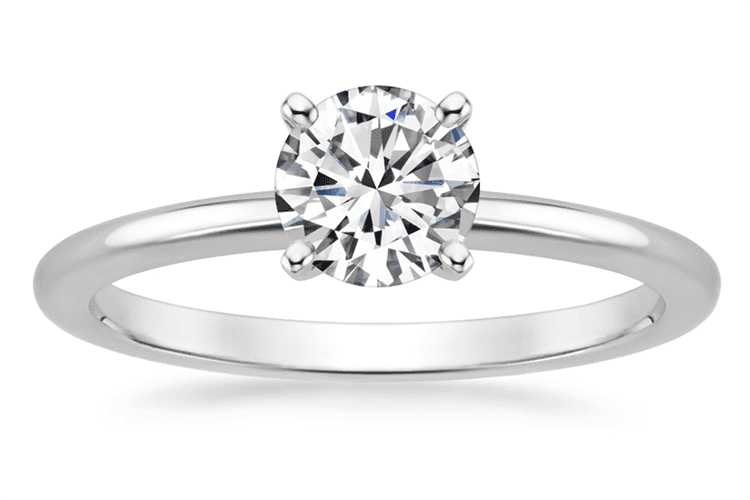
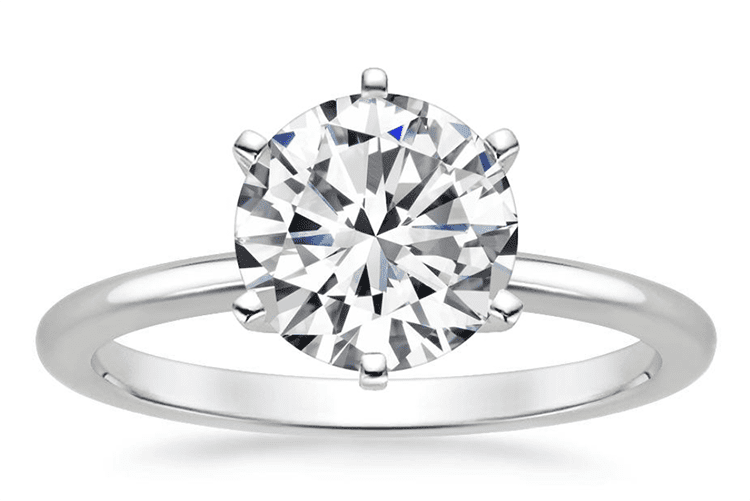
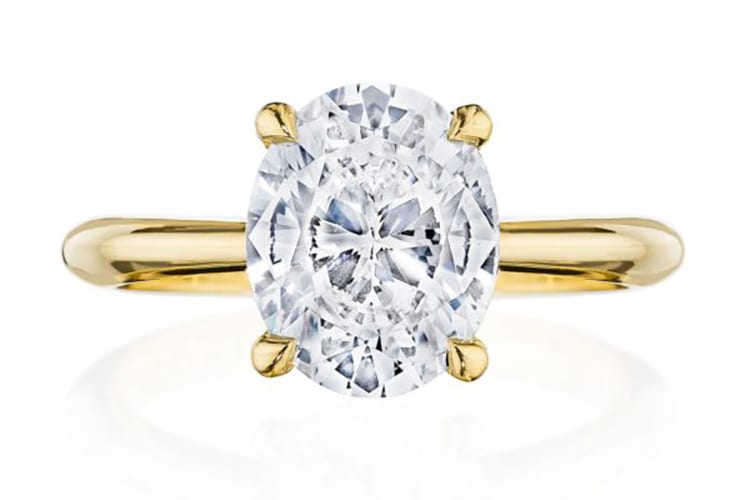
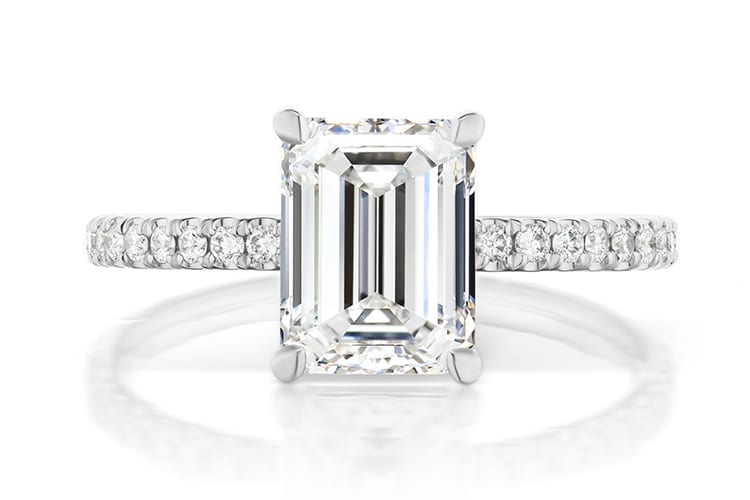
If you see a ring with four prongs, it requires less metal than one that uses six prongs, and thus allows more light to pass through the diamond. However, the most popular prong setting for solitaire diamonds is the one Tiffany & Co. debuted in 1886. This one has six prongs, but the renowned jewelers developed a method in which the stone would reflect and refract the light on a simple band. Tiffany has trademarked this design, therefore if you have decided that this is the only style for you, Tiffany can work with you with different carat weights for this setting. Other four and six-prong settings that have a similar effect can be found out at local jewelers and online as well.
Pros:
- Less metal, allowing more light
- Four prongs secure the diamond but six prongs will secure it even more
- Accents almost every diamond cut/shape and size
- Prongs are often easy to maintain and wear as long as they are set low (as opposed to high)
Cons
- High set prongs can snag on clothing, thus loosening the prongs
- Generally, prongs tend to loosen with age so it’s important to get them checked every couple of years. You can put the ring up to your ear and shake gently, and if you hear the diamond moving around at all, it’s time for a prong check.
Additional Details
Prong settings are best in the most durable metals such as Platinum, Palladium, and 14K gold — the lower the karat gold, the harder the metal.
Bezel Setting
A bezel setting surrounds the diamond with a metal frame that holds the diamond securely in place. Bezels are custom-created for different diamond cuts and sizes.
Here’s where it gets a little tricky; solitaires (remember, they are a single stone) can be set in bezels, too, and often look more modern than prongs. The design keeps them at a low profile, sitting closer to the finger than prong-set rings.
Bezels evoke a modern look when the metal is solid and without detail. When a bezel is designed with milgrain (tiny cuts in the metal frame), it can have a more antique or vintage feel as milgrain was a technique that was popularized in the early 20th century.
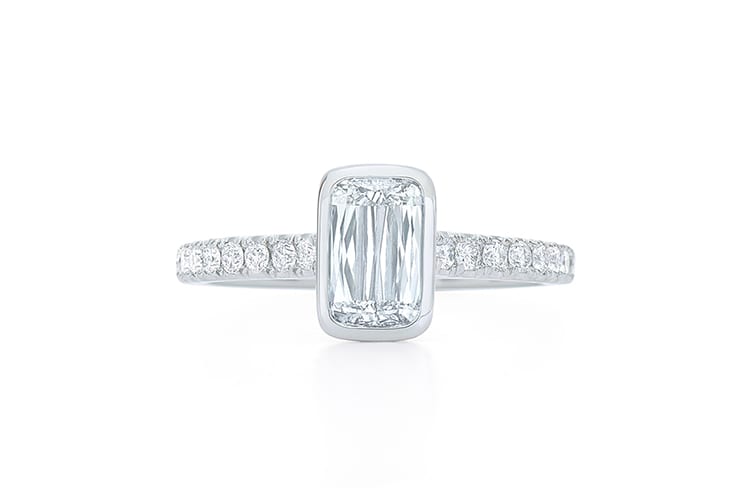
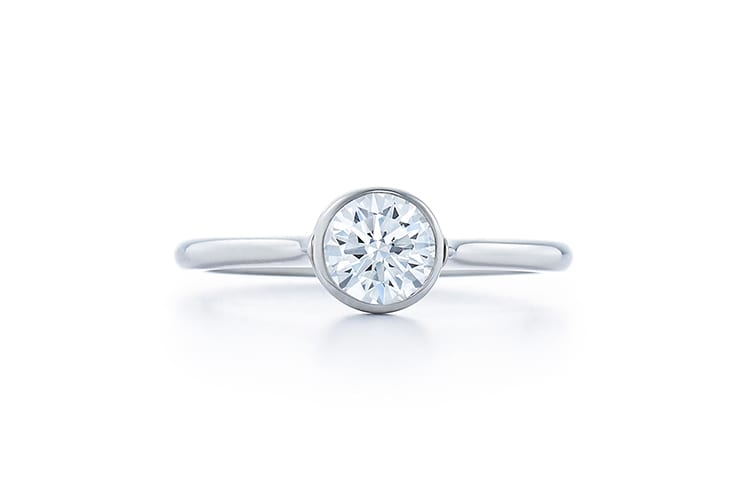
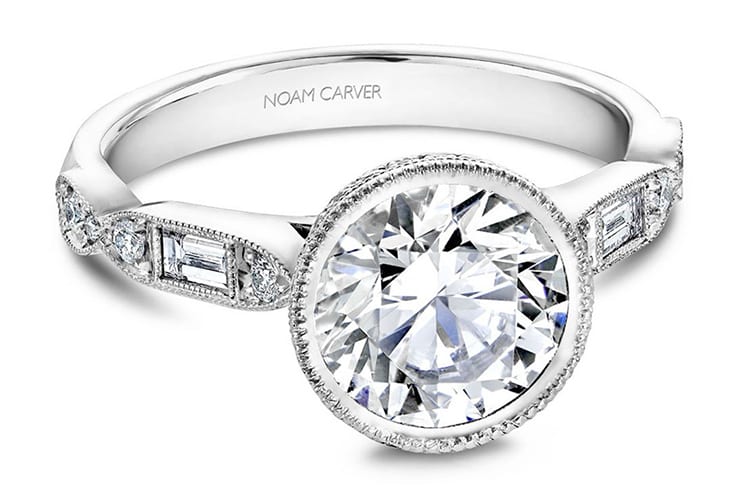
Pros
- The most secure setting for a diamond
- Can create an ultra-sleek modern style
- Detailed with milgrain, it can give it an antique/vintage feel
- Will not snag on clothing
- A great setting for an active lifestyle or a career in which your bride-to-be works with her hands
Cons
- Does not allow as much light, thus lessening some of the brilliance of a diamond
- Hides a bit more of the stone than some of the other settings
- It is harder to set perfectly around diamonds that aren’t round, such as pear, marquise, emerald, and asscher cuts, so make sure the jeweler’s setter is an expert in bezel set rings.
Additional Details
If you want your diamond bezel set in platinum or palladium — these metals are relatively hard to work with — you should find an expert jeweler who excels at bezel setting. It’s imperative that the border of the ring follows the outline of the diamond seamlessly.
Halo/Cluster Setting
Halos feature a border of smaller diamonds that encircle the central diamond, making the main diamond appear larger and more sparkly than it truly is. It’s a perfect style to consider if you are on a budget and need to choose a smaller diamond. You can beef up the look and get more bang for your buck if you surround it with a halo setting.
Halos can be designed to accommodate any diamond shape — for example, round for round diamonds and square for princess cut. There are also different styles of halos. One style is known as a cluster ring. These clusters date back to the 19th century and have been popular ever since. This style creates more of a floral shape with the outer rim of diamonds. Clusters can have bezel-set centers or a prong-set center and a bezel or prong-set surround, whereas the generation of halos that came after often have a prong-set center and a channel (diamonds set between two strips of metal) or pavé-set (diamonds set between tiny beads) border of diamonds. These channels or pavé-set halos will often feature a channel or pavé-set band.
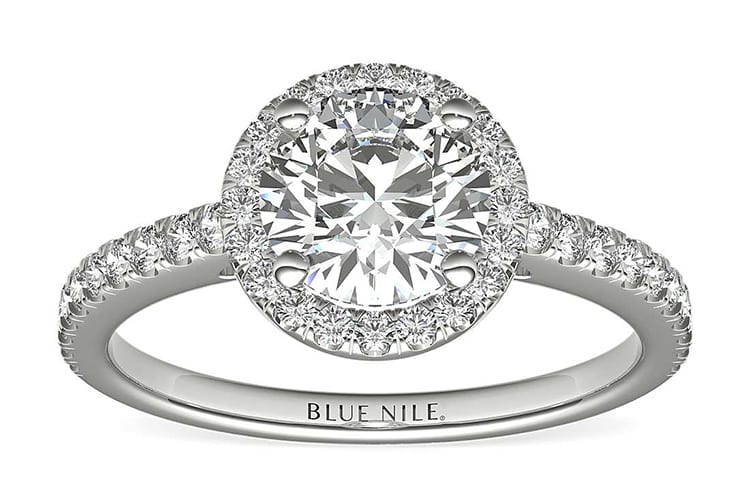
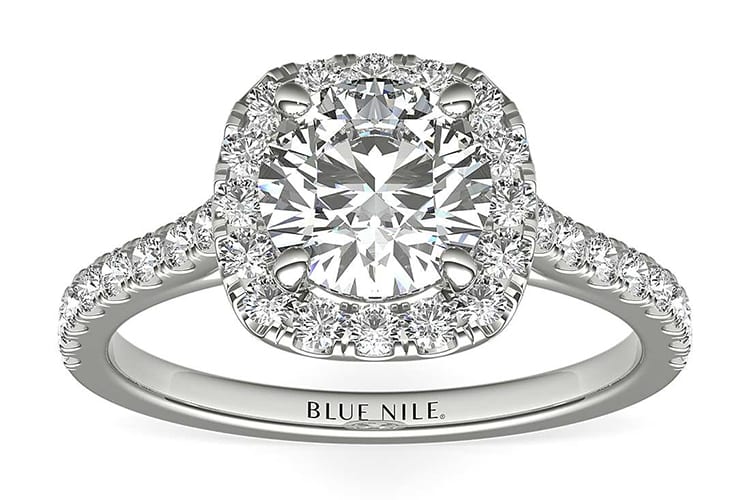
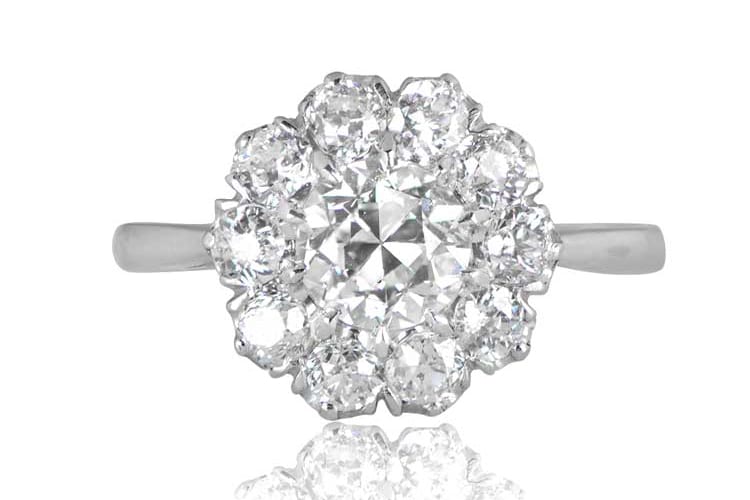
Norfork cluster engagement ring with a row of old mine cut diamonds, hand-crafted in platinum. Photo courtesy of Estate Diamond Jewelry.
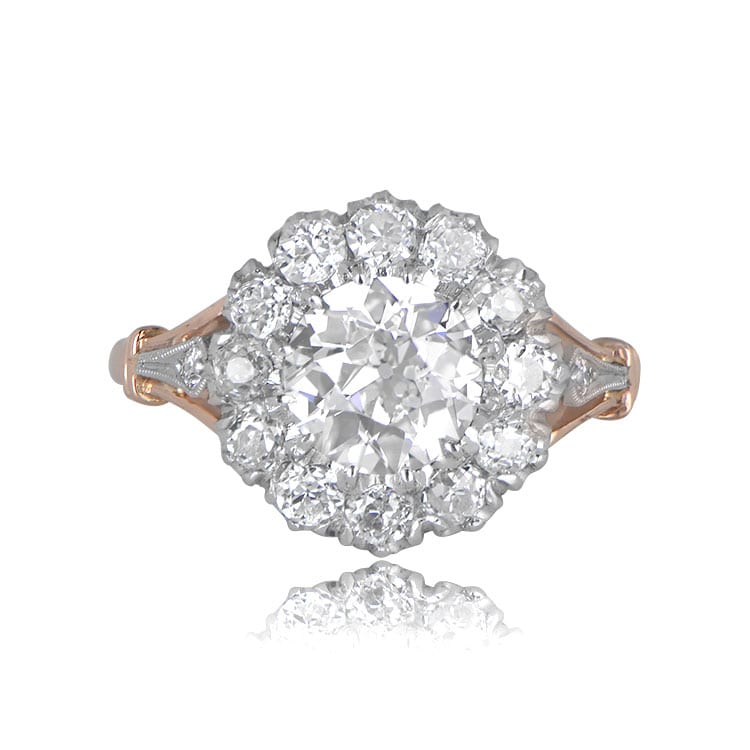
Pros:
- Larger look for less
- The ring appears to display more sparkle
- Offers more security around the center stone
- Different types of styles are available in this setting, forming a floral look and/or complementing other cuts of diamonds
Cons
- Although it helps secure the center stone, the halo’s smaller stones are in danger of becoming loose or falling out. The versions based on the antique rings with bezel-set halos are less likely to come loose.
Additional Details
Halos can be built in two parts and then soldered together, which allows for contrasting metal colors such as white and yellow or white and rose gold. They can look feminine yet modern or have an antique vibe.
Three-Stone Settings
A style that was first popular in the late 18th and early 19th centuries, the three-stone ring was originally set down into the metal and designed with decorative elements such as filigree (open scroll work). The stones were traditionally of the same size and cut but often there were two diamonds and a colored gemstone or one diamond and two colored gemstones on the sides. This style evolved over time into a ring with prong-set or bezel-set diamonds and little or no other decoration.
The ring is recognized as symbolic of a couple’s “journey,” with the three stones representing their past, present, and future together. The three stones can be all the same size or the center stone can be larger and the two side stones the same size. The most popular are the round brilliant diamond versions, but lately with alternative diamond rings increasing in popularity, we see three-stone rings in all different types of cuts.
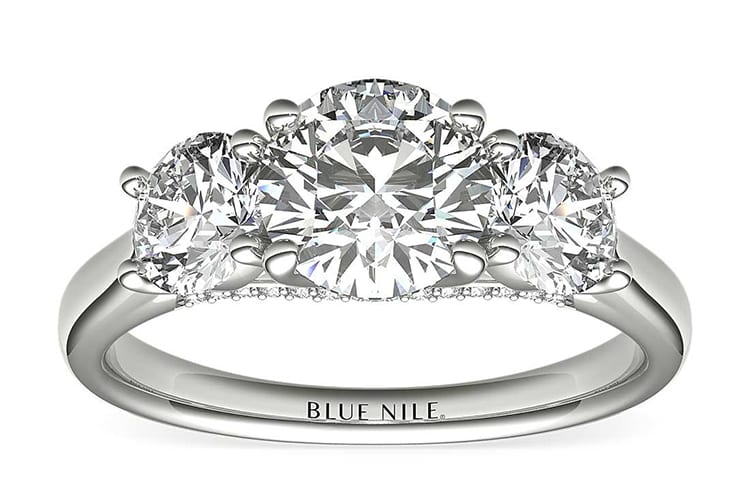
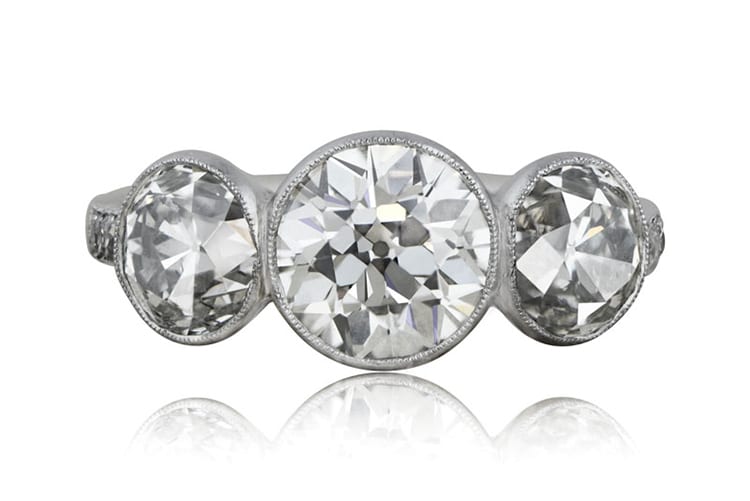
Pros: Three-Stone Prong/Three-Stone Bezel
- Allows for multiple larger stones
- Features a charming and romantic feeling with two smaller side stones and a larger center stone
- This style provides more coverage horizontally across their finger, which appeals to a wide demographic of women
Additional Pros for Three-Stone Bezel-Set
- Bezels can be high polished for a streamline look or can feature milgrain detail for an antique or vintage feeling.
Cons: Three-Stone Bezel- or Prong-Set
- Higher maintenance than a single stone ring
- If prong-set, it will need to be checked more often
- If bezel-set, it will need to be cleaned more often
- The diamonds need to match to bring out the beauty of the entire ring and not look like it was designed poorly.
Flush/Gypsy Settings
Originally called a gypsy setting in the late 19th and early 20th century, this was a style that was popular for both men and women. They were often set with one or three stones. Dandy men would wear them on their pinkies. Then in the mid-20th century through the 1970s they became popular again with men. Although the gypsy/flush setting went through different phases in demographics earlier on, it is a contender today among women who prefer a bolder, chunkier look in a ring.
These are available in one- or three-stone styles for engagement rings, and men’s rings feature smaller stones set into the wide wedding band. A jeweler drills a hole into the band, then works the metal around the diamond to hold it in place. The diamond then sits securely in the band of the ring.
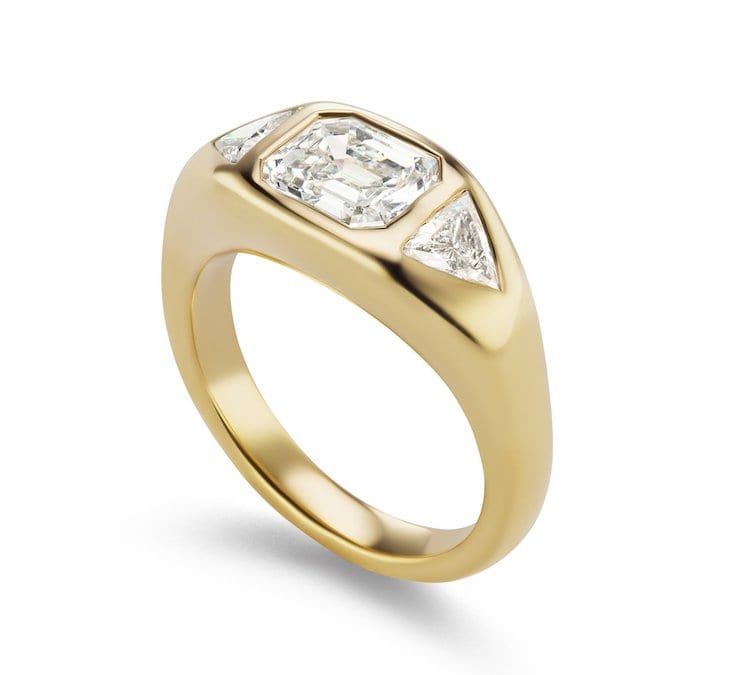
Pros
- When set correctly, this offers one of the two most secure settings — the other being the bezel-set ring
- Depending on the size of the diamond, this setting can offer a bold statement look or a more subdued streamlined appearance
- It’s a versatile choice for those with active lifestyles and who work with their hands
Cons
- This style is the one that shows the least amount of light passing through the stone
Tension Settings
Tension set is named after how the metal holds the gem — with tension. A jeweler calibrates the exact dimensions of the diamonds so that he can cut small grooves in the exact spots where the diamonds will be held. Then, he pushes the metal down to create the pressure to secure it, making the diamond appear to be suspended in place. A tension-style band features a similar look but adds more security by placing a prong on the underside of the diamond to hold it more firmly in place.
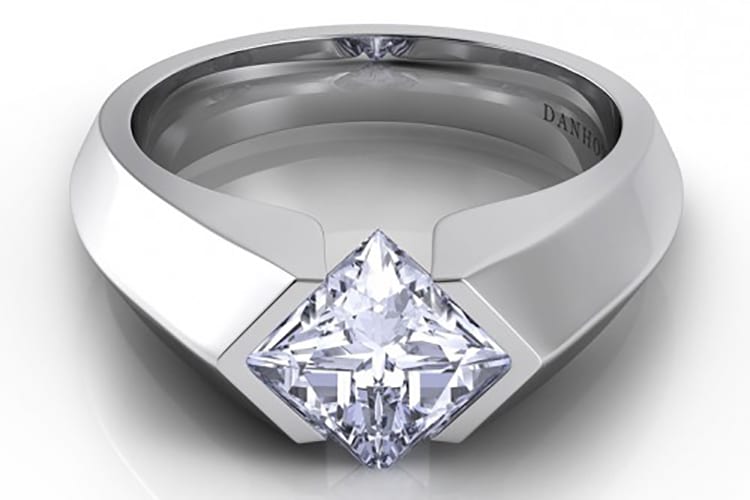
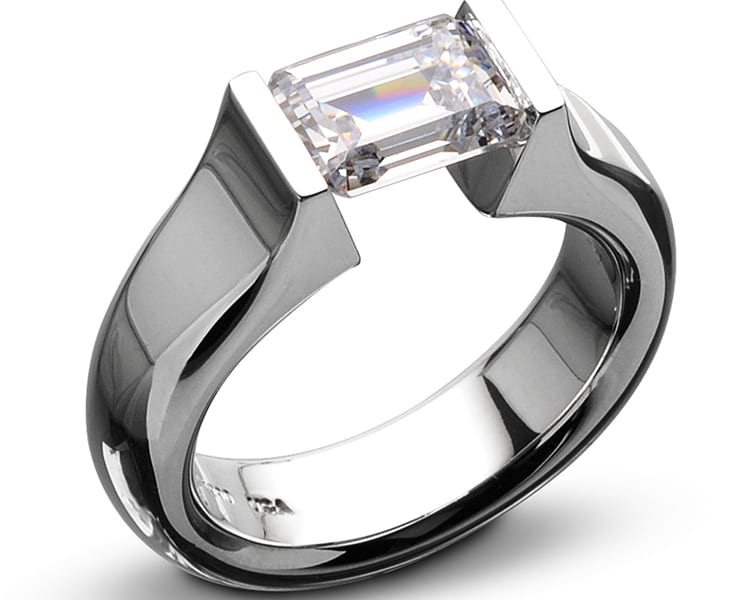
Photo courtesy of TQ Diamonds.
Pros
- Offers a sleek, ultra-modern look
- Like a prong-set ring, there is a minimal amount of metal around the diamond, thus enhancing its brilliance
Cons
- Even though the metal might be secure, the look of the tension setting causes anxiety since the diamond “appears” as if it could fall out.
- When and if it needs to be resized, it will often be more expensive. Many jewelers will want to remove the diamond and reset it so the process of sizing doesn’t loosen the force or pressure holding it together
Additional Details
If your bride-to-be desires this type of look, it might be safer to go with a tension-set style as it offers all the benefits of a tension setting without the concerns. The only con is that it is more difficult to clean due to the underside prongs.
Cathedral Settings
This one is tricky. A cathedral is more of a style of setting. The diamond itself could be held by prongs or a tension setting that is built up by what looks like cathedral arches, which you can see on the underside of the diamond. It is a graceful style that features a decorative element that never overpowers but acts as an elegant detail for the bride-to-be who wants something classic, timeless, and yet more unusual than a basic prong setting.
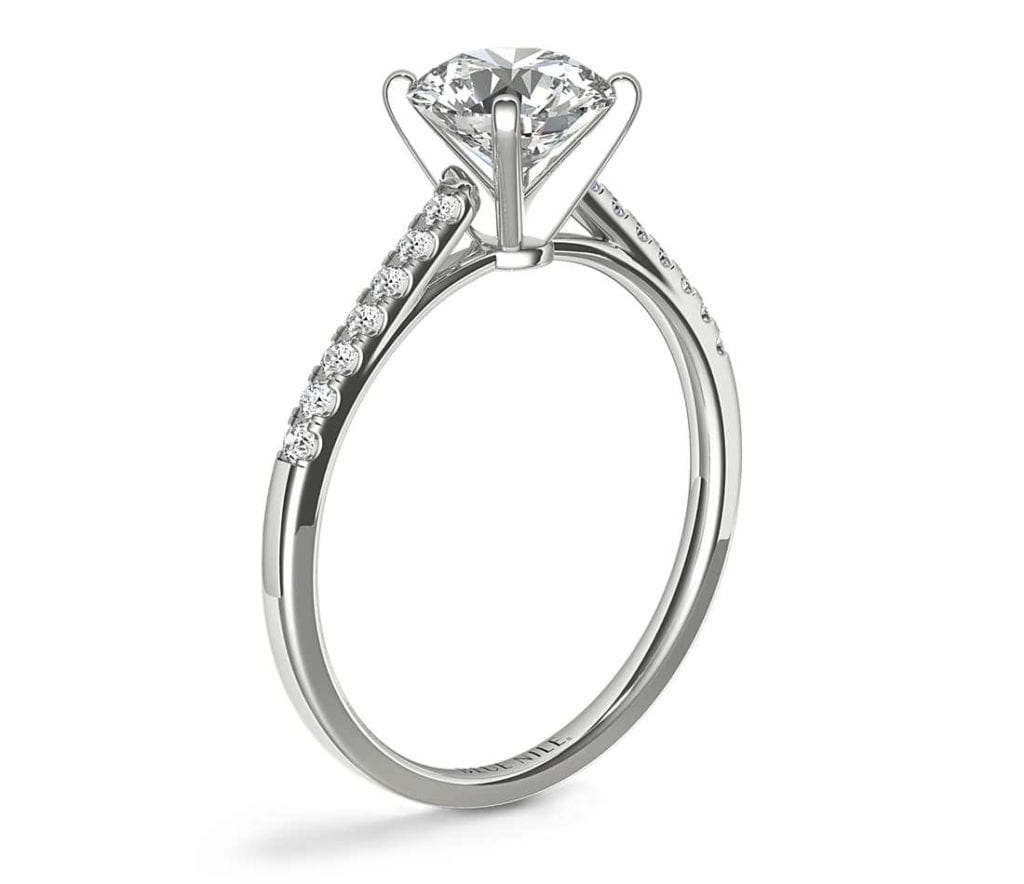
Pros
- The added height of the arches seems to give the diamond a larger look
- It creates a look with more personality and elegance than the basic prong setting and accentuates and highlights the center stone
- Offers a secure setting for the diamond
Cons
- There are lots of opening and crevices, which makes it hard to clean
- It sits very high, which means it can snag on clothes
- If you are looking for a ring that allows the diamond to stand out more than another component of the ring, a cathedral setting might have too much going on.
The Shank = The Rest of the Ring
Now that we’ve taken you through the settings and mountings of the diamond, let’s move on the rest of the ring — the shank — which goes from the shoulders (sides of the ring) to the back of the ring (the part that faces the inside of the finger). It is often a continuous band of metal that in most cases tapers from the diamond to the back of the ring that circles around the finger. In addition to the basic shank, there are three popular shanks you should know.
Split Shank
Instead of one continuous band, it splits into two thinner bands that wind up in the same place at the back of the ring.
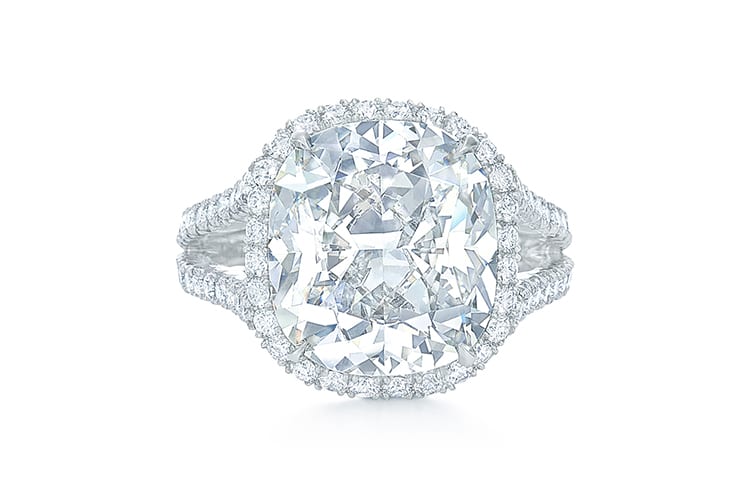
Pavé Shank
In these types of shanks the diamonds look like that are pavéd (attached) around the ring. What’s really happening is that tiny beads are holding the diamonds on the shank in place. If your woman likes a lot more glamour and bling, this might be the shank for her.
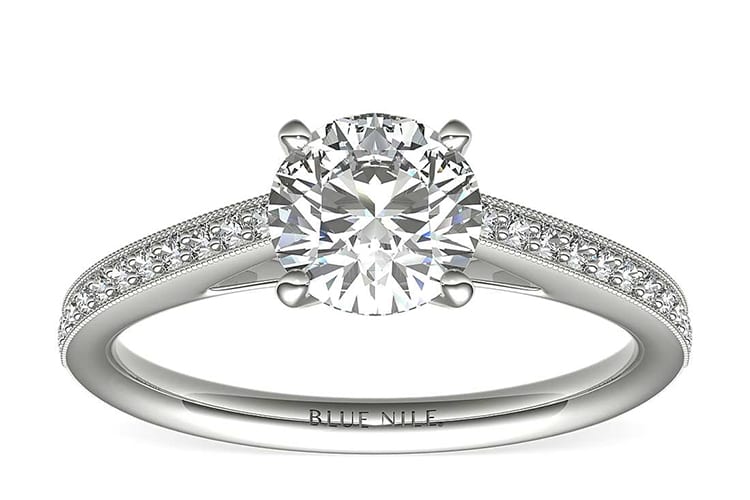
Channel-Set Shank
This style features two strips of metal that curve around the finger and hold the diamonds in place with each strip. They have more metal than pavé-set bands, therefore they don’t add as much bling, but they do add more sparkle to the ring.
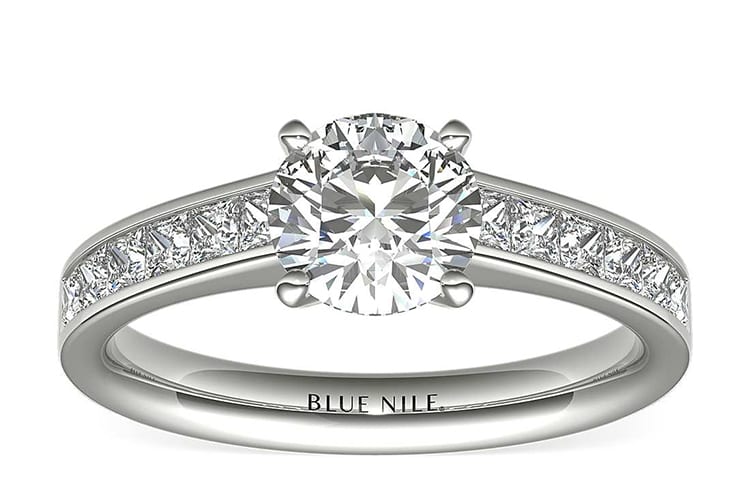
Pavé- and channel-set shanks work best with the bezel, prong, and halo styles. There are also half pavé and half channel shanks that encircle only the part of the finger that can be seen.
Bottom Line
Ring settings can look modern or antique, and the way the setting holds the diamond has an impact on the amount of light passing through the gem, as well as the security of the stone. Work with your jeweler to find the best setting for your lifestyle.

